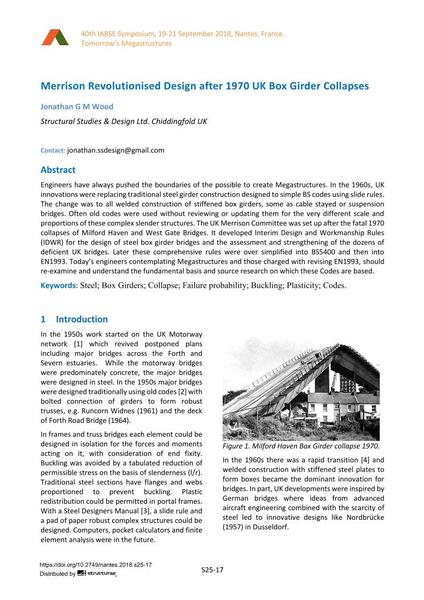Merrison Revolutionised Design after 1970 UK Box Girder Collapses

|
|
|||||||||||
Détails bibliographiques
| Auteur(s): |
Jonathan G. M. Wood
(Structural Studies & Design Ltd. Chiddingfold UK)
|
||||
|---|---|---|---|---|---|
| Médium: | papier de conférence | ||||
| Langue(s): | anglais | ||||
| Conférence: | IABSE Symposium: Tomorrow’s Megastructures, Nantes, France, 19-21 September 2018 | ||||
| Publié dans: | IABSE Symposium Nantes 2018 | ||||
|
|||||
| Page(s): | S25-17 | ||||
| Nombre total de pages (du PDF): | 8 | ||||
| DOI: | 10.2749/nantes.2018.s25-17 | ||||
| Abstrait: |
Engineers have always pushed the boundaries of the possible to create Megastructures. In the 1960s, UK innovations were replacing traditional steel girder construction designed to simple BS codes using slide rules. The change was to all welded construction of stiffened box girders, some as cable stayed or suspension bridges. Often old codes were used without reviewing or updating them for the very different scale and proportions of these complex slender structures. The UK Merrison Committee was set up after the fatal 1970 collapses of Milford Haven and West Gate Bridges. It developed Interim Design and Workmanship Rules (IDWR) for the design of steel box girder bridges and the assessment and strengthening of the dozens of deficient UK bridges. Later these comprehensive rules were over simplified into BS5400 and then into EN1993. Today’s engineers contemplating Megastructures and those charged with revising EN1993, should re-examine and understand the fundamental basis and source research on which these Codes are based. |
||||
| Mots-clé: |
acier caissons
|
||||
